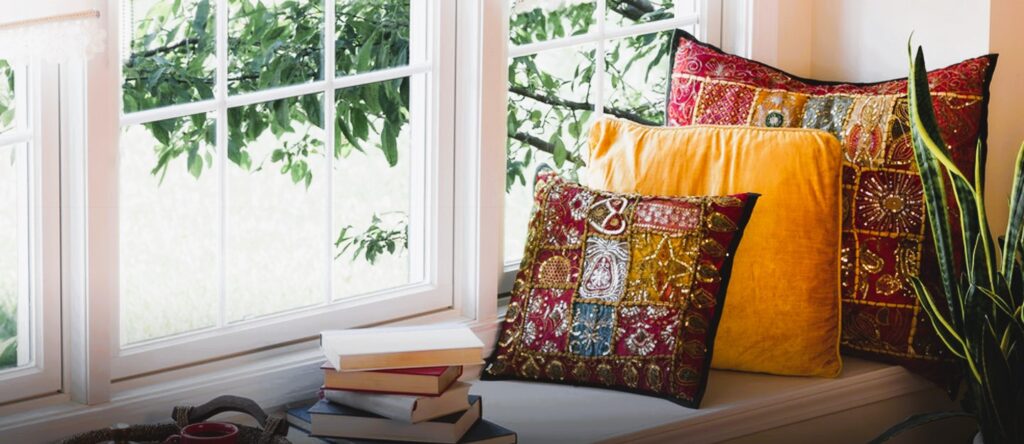In our increasingly busy and noisy world, creating a peaceful and quiet sanctuary at home is essential for our well-being and comfort. Excessive noise can cause stress, disrupt sleep, and negatively impact our overall quality of life. In this article, we will explore effective noise reduction solutions that can help transform your home into a serene and tranquil haven.
Soundproofing Windows and Doors
Windows and doors are common entry points for external noise. Soundproofing these areas can significantly reduce the amount of noise that enters your home. Here are some effective strategies:
- a. Install double-glazed windows: Double-glazed windows have two layers of glass with an insulating air or gas-filled space in between. This design helps to reduce noise transmission and enhance insulation.
- b. Use window seals and weatherstripping: Applying seals and weatherstripping around windows and doors can minimize air gaps and effectively block sound infiltration.
- c. Hang heavy curtains or drapes: Thick, heavyweight curtains or drapes can act as sound absorbers and create an additional barrier against noise. Opt for curtains with a dense fabric or consider adding a soundproofing layer behind them.
- d. Install solid-core doors: Solid-core doors are denser and offer better sound insulation compared to hollow-core doors. Upgrading to solid-core doors can help reduce noise transmission between rooms or from outside.

Insulating Walls and Ceilings
Walls and ceilings can also contribute to noise transmission within your home. Enhancing their insulation can create a quieter indoor environment. Consider the following solutions:
- a. Add insulation materials: Insulating materials, such as fiberglass or mineral wool, can be installed within wall cavities or added to the attic space above the ceiling. These materials help absorb and dampen sound vibrations, reducing noise transfer.
- b. Use soundproofing panels: Soundproofing panels or acoustic tiles can be installed on walls or ceilings to minimize sound reflection and absorb noise.
- c. Install resilient channels: Resilient channels are metal strips that can be attached to wall studs before installing drywall. They create a gap between the wall and the drywall, reducing sound transmission. Understanding Building Codes: Compliance and Safety for Window Installations.
Sealing Floor Gaps
Floor gaps can allow noise to travel between different levels of your home or from adjacent apartments. Sealing these gaps can help minimize noise transmission. Here’s what you can do:
- a. Fill gaps with acoustic sealant: Use acoustic sealant to fill gaps and cracks in the flooring. This helps to create an airtight seal and reduce sound transfer.
- b. Add carpeting or rugs: Carpets and rugs can absorb sound and provide additional insulation against noise transmission. They also add warmth and comfort to your living spaces.
Using Soundproofing Materials
In addition to the aforementioned solutions, using soundproofing materials strategically throughout your home can further enhance noise reduction. Consider the following options:
- a. Acoustic panels: Acoustic panels are designed to absorb sound and reduce reverberation. They can be installed on walls, ceilings, or even as freestanding partitions.
- b. Soundproof curtains or blinds: Specialized soundproof curtains or blinds feature multiple layers of dense fabric and sound-blocking materials. They can effectively block external noise and create a quieter ambiance.
- c. Soundproofing foam: Soundproofing foam can be applied to walls or ceilings to absorb and dampen sound vibrations. It is particularly useful in rooms where noise reflections and echoes are a concern, such as home theaters or music studios.
Reducing Internal Noise Sources

Apart from external noise, internal noise sources within your home can also disrupt tranquility. Consider implementing these measures to reduce internal noise:
- a. Use area rugs or carpets: Area rugs or carpets can absorb noise and minimize sound reflections within rooms, especially in high-traffic areas.
- b. Install soundproof doors between rooms: Installing soundproof doors between rooms, particularly in areas where noise is generated (e.g., laundry rooms or home offices), can help contain sound and maintain a peaceful environment in other parts of the house.
- c. Consider sound-absorbing furniture and décor: Opt for furniture pieces and décor items that have sound-absorbing properties. Fabrics with a dense weave, upholstered furniture, and acoustic panels incorporated into furniture design can help reduce noise reflections.
Conclusion
Creating a peaceful sanctuary at home is achievable with the right noise reduction solutions. By implementing strategies such as soundproofing windows and doors, insulating walls and ceilings, sealing floor gaps, using soundproofing materials, and reducing internal noise sources, you can significantly enhance the tranquility of your living spaces. Remember that a peaceful home environment contributes to your overall well-being and provides a haven where you can unwind, relax, and enjoy a quieter and more serene lifestyle.
